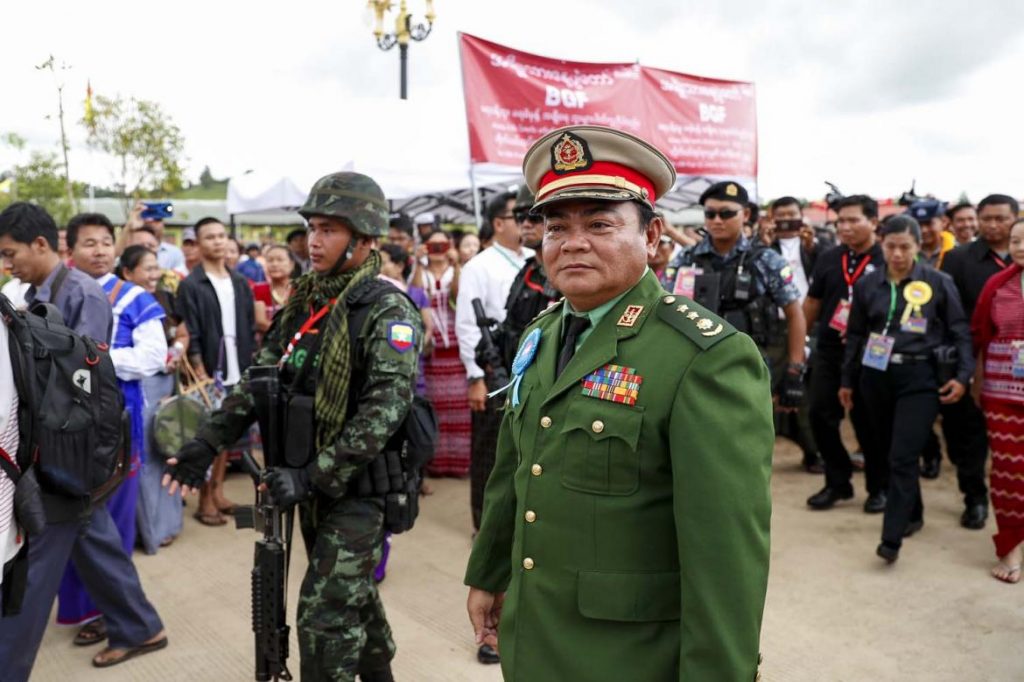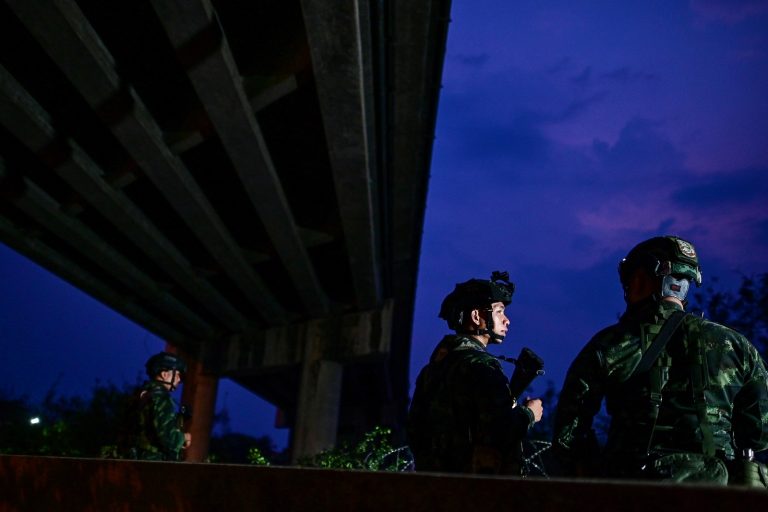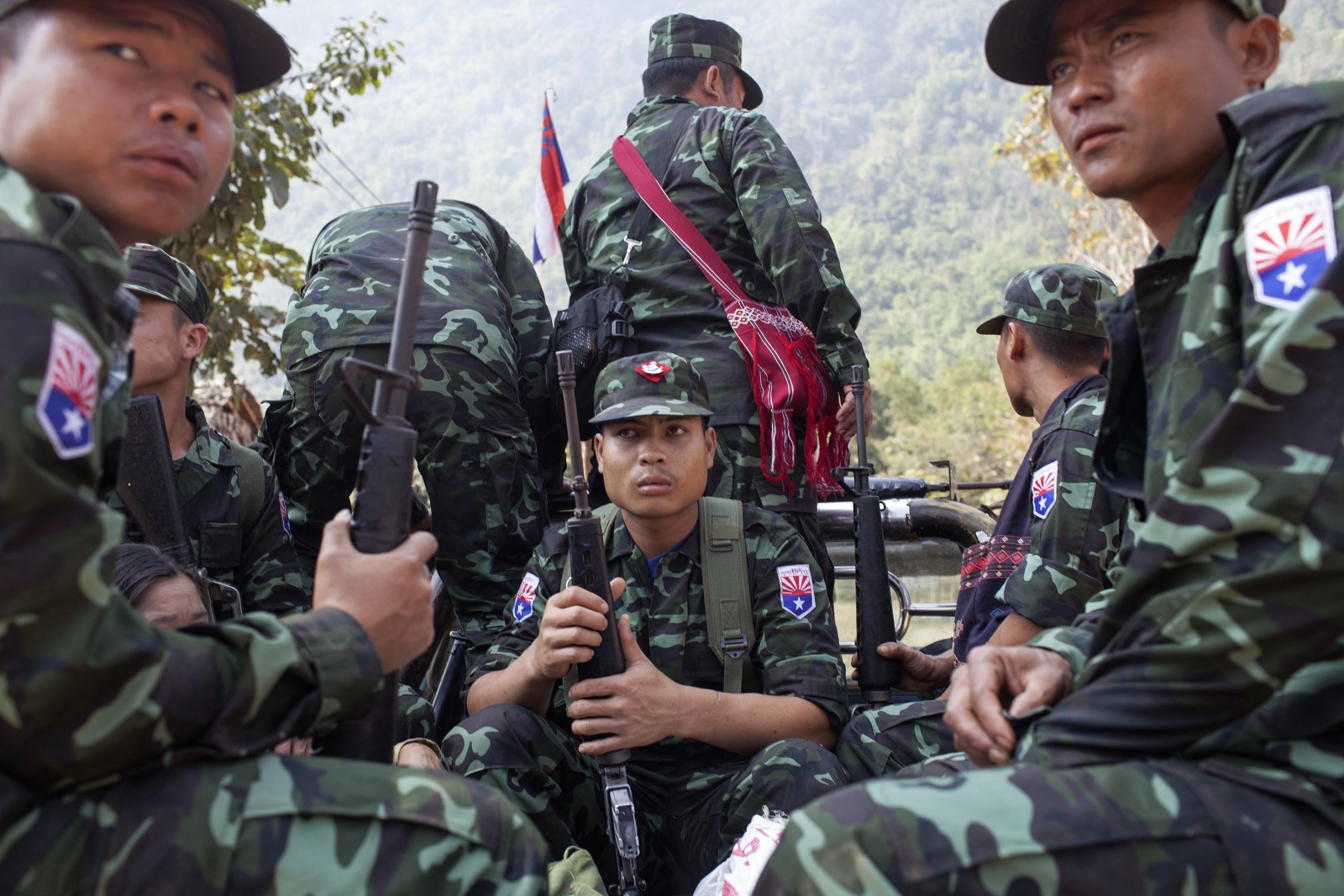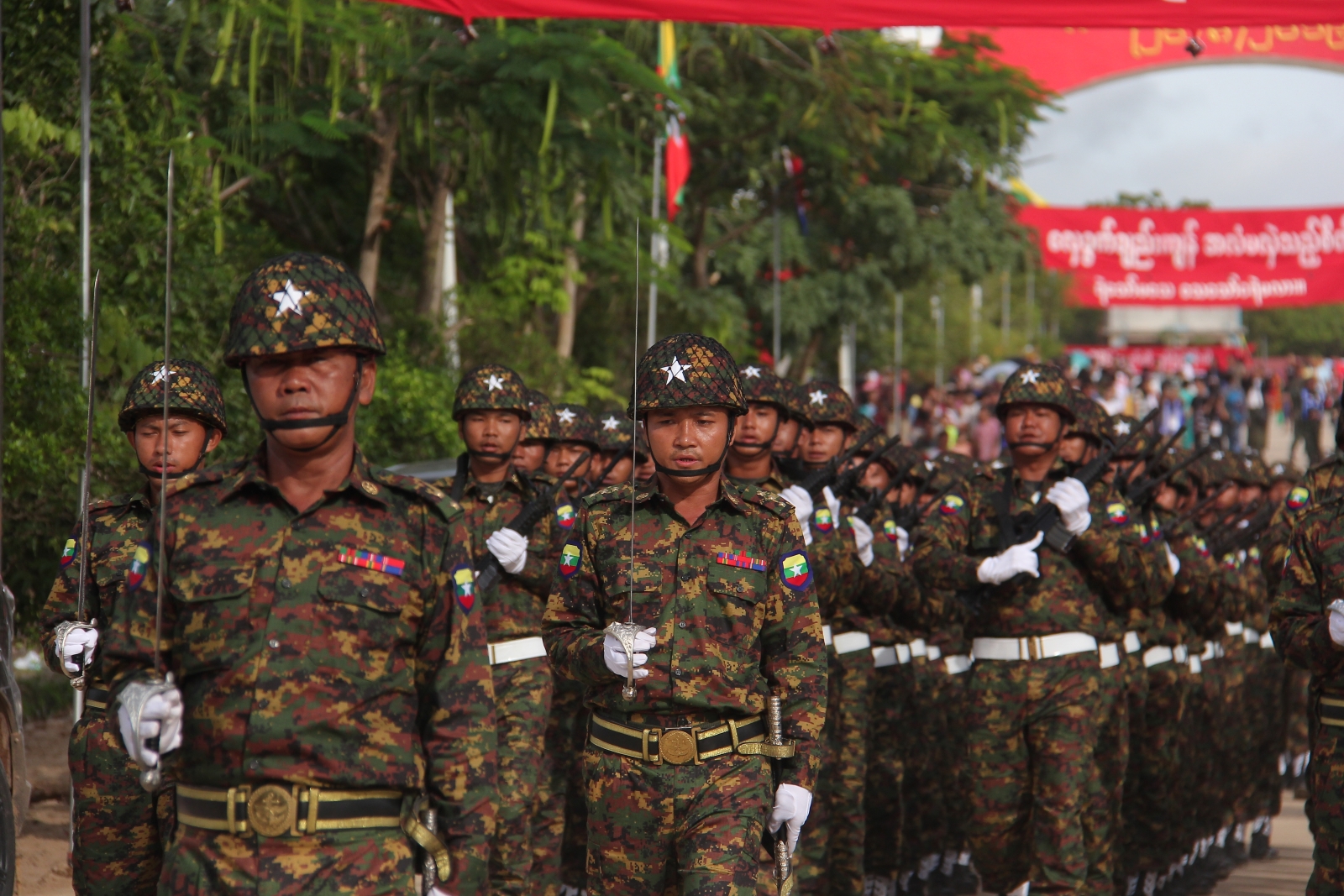The Kayin State Border Guard Force has come under intense pressure from the Tatmadaw over its extensive, controversial business interests and there’s concern the ultimatum could trigger fresh hostilities in one of the country’s most war-torn areas.
By NAW BETTY HAN, THOMAS KEAN and LAWI WENG | FRONTIER
This story is from the January 28 issue of Frontier
Over the past month, rising tensions between the Tatmadaw and the Kayin State Border Guard Force over the latter’s business dealings have shaken Kayin State’s fragile political and conflict landscape.
Created in 2010 from an insurgent group known as the Democratic Karen Buddhist Army, which had earlier split from the Karen National Union, the BGF is among the best-equipped and most capable of the various ethnic forces under the command of the Tatmadaw.
But over the past decade it has parlayed its power, influence and autonomy into an empire of casinos, illegal trade gates, mining enterprises, tourism businesses and, most recently, a huge property and gambling development at its Shwe Kokko enclave. Like gamblers who don’t know when to cash in, the BGF’s leaders now appear to have overplayed their hand.
Amid growing criticism of the BGF’s business dealings, the Tatmadaw demanded three of the group’s leaders – including its figurehead, Colonel Saw Chit Thu – either give up their most lucrative business interests or resign. They have reluctantly agreed to go, but thousands of soldiers in the force have vowed to also quit if the Tatmadaw accepts their resignations.
The Tatmadaw has urged BGF members to reconsider their threat, but it also continues to insist that the three leaders must go.
For now, the situation remains tense and the future unclear. Rival armed groups like the KNU and Democratic Karen Benevolent Army are watching on warily, and there are fears the dispute could possibly lead to renewed clashes in a state that has barely begun to recover from six decades of insurgency.
“In a worst-case scenario, the fragile decade-old peace could unravel pretty quickly in Kayin State, drawing other armed groups into the fray,” cautioned Mr Richard Horsey, a Yangon-based political analyst. “Even if this doesn’t happen, a quick and decisive outcome appears unlikely.”
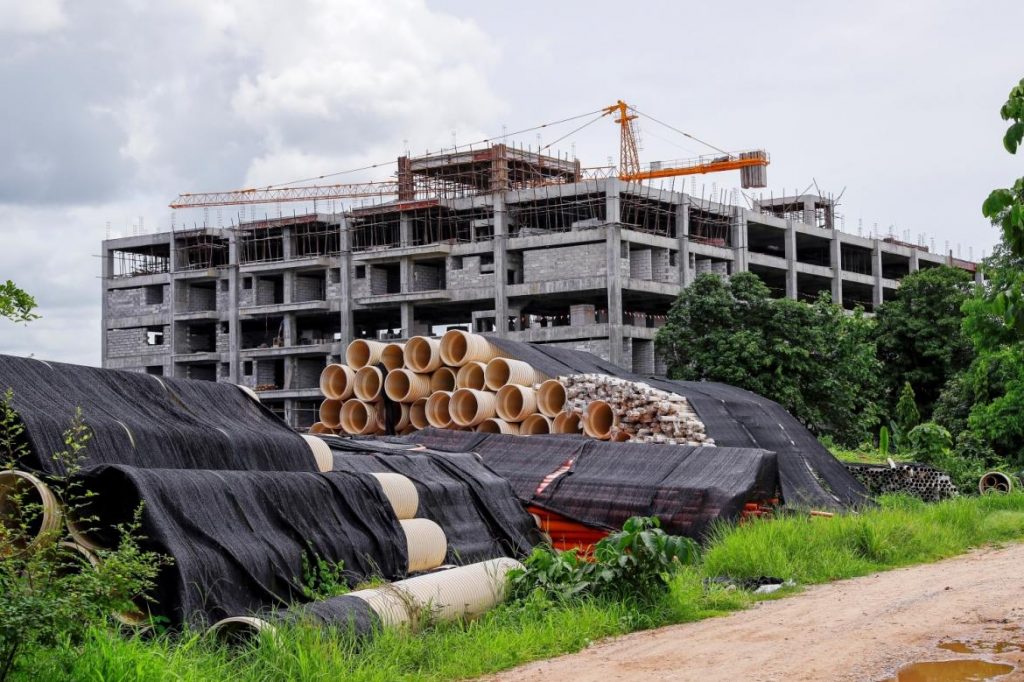
The BGF’s bad deal
At the centre of the controversy is the Yatai New City, a proposed US$15 billion development backed by ethnic Chinese investors at Shwe Kokko, about 20 kilometres north of Myawaddy.
As Frontier has previously reported, the project got underway in 2017 and construction work began the following year. The Myanmar Investment Commission has granted the joint venture company, Myanmar Yatai, a permit to build around 60 luxury villas, but the developer very quickly went far beyond what had been approved.
The project quickly attracted international attention, with some mistaking it for a Chinese state-backed project to secure a foothold on the Myanmar-Thailand frontier. Instead, the rationale was more prosaic: a hub for online gambling aimed at attracting companies from Cambodia and the Philippines, whose governments were coming under pressure from China to rein in an industry estimated at $24 billion a year.
Read more: The mystery man behind the Shwe Kokko project
Following intense media and civil society scrutiny, Myanmar’s civilian government announced an investigation into the project in June 2020. An inspection team began visiting the site every two weeks, and construction work was suspended. Then in October, the Tatmadaw revealed it was investigating three of its own officers for alleged corruption linked to Yatai New City.
The Yatai New City project has also brought renewed attention to the BGF’s other business interests, including a string of casinos along the Thaung Yin River in Myawaddy, opposite the Thai town of Mae Sot, and dozens of trade gates in the town that handle up to $1 billion in goods each year.
On December 10, the Tatmadaw suddenly moved troops into the border town of Myawaddy, prompting the BGF to lock down Shwe Kokko. Over the next two days the military seized almost 150 unlicensed vehicles imported into Myanmar from Thailand through the BGF’s illegal trade gates. On the pretext of recent fighting with the Karen National Liberation Army hundreds of kilometres away, it then set up new security checkpoints around the town. The Tatmadaw also said it was cooperating with the police to crack down on illegal casinos linked to the BGF in Myawaddy.
At the same time, the Myawaddy Township General Administration Department began conducting field inspections to upgrade Shwe Kokko to a city – a move that would result in a stronger government presence in the BGF heartland. At a press conference on January 8, government spokesman U Zaw Htay said the government had suspended the project because it had exceeded the permitted size and it was working to bring the project under state control.
Behind the scenes, the Tatmadaw began pressuring the BGF’s three most senior members to either give up their businesses or resign. On January 8, one of the three, Major Saw Moke Thone, who oversees the border gates and casinos, agreed to quit during a meeting at the Tatmadaw’s Southeast Region Command.
Read more: Shwe Kokko: A paradise for Chinese investment
Four days later, following meetings with senior BGF officials, Chit Thu and Major Saw Tin Win then offered their resignations. That evening, shortly before Chit Thu sent his resignation, the Myanmar authorities cut the power to the Shwe Kokko area, in an apparently successful attempt to force his hand.
“Tatmadaw rules and regulations state that members are not allowed to run businesses using their soldiers,” Tin Win told Frontier. “Because of the BGF casino businesses, Shwe Kokko new city project and others, the Tatmadaw has come under pressure from the government and public. So BGF leaders and members agreed to resign so as not to harm the military.”
But the decision of many ordinary BGF members to threaten to quit alongside their leaders seems to have spooked the Tatmadaw. On January 15, a Tatmadaw delegation led by Lieutenant-General Aung Soe, chief of the Bureau of Special Operations 4, met BGF leaders at Myaing Gyi Ngu, former headquarters of the Democratic Karen Buddhist Army and spiritual home of the BGF, and urged them to reconsider their resignation. Following the meeting, some BGF members said they planned to withdraw their resignation, but the situation remains fluid.
Tin Win said the BGF was holding internal discussions and also negotiating with the Tatmadaw. But he would not rule out BGF members quitting the Tatmadaw and re-establishing themselves as a non-state armed group.
He cited the guidance of Myaing Gyi Ngu Sayadaw, the BGF’s spiritual leader who was also known as U Thuzana and died in 2018. “Before he passed away, Myaing Gyi Ngu Sayadaw said that if the Tatmadaw doesn’t need us, we should stand on our own like when we were the DKBA,” Tin Win recalled. “We won’t rebel against the state, we won’t attack any other organisation. We will just work for business, religion and peace in our Karen land … The main thing is peace and prosperity in Kayin State.”
He added that the future of the BGF depends on Tatmadaw. “BGF leaders are committed to maintaining peace and development in our region, and we hope that the government and the military will help us to do that.”
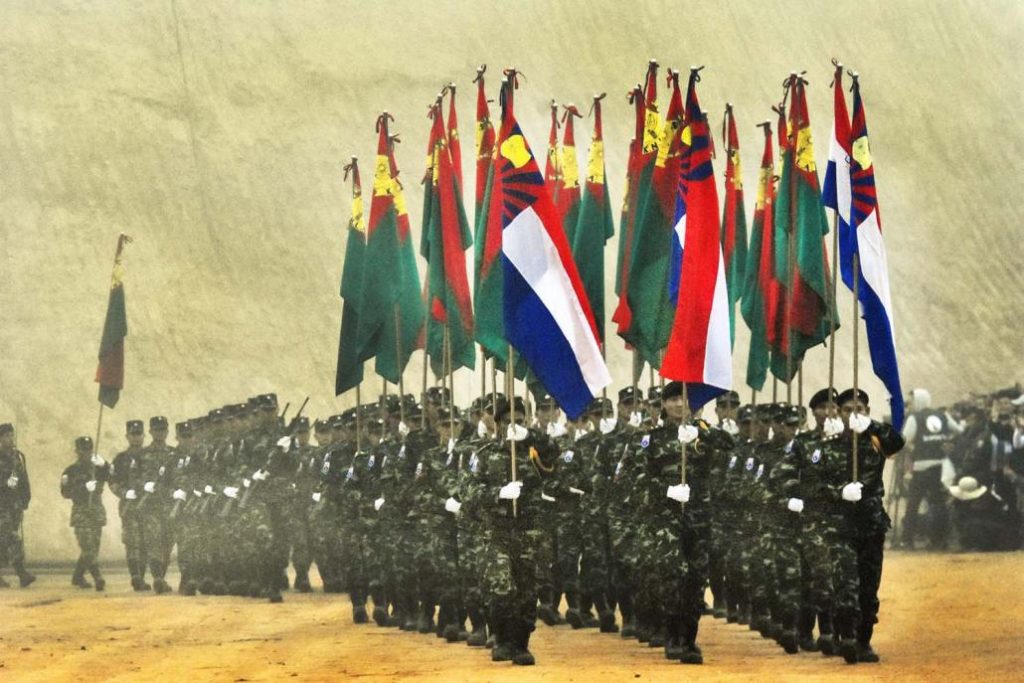
Putting the band back together?
For the past decade, Kayin State has seen less conflict than at just about any time since independence. In 2010, the majority of DKBA troops transformed into the BGF. In January 2012, the Karen National Union signed its first ceasefire with the Tatmadaw since the Karen Revolution erupted in January 1949. The KNU, a breakaway force known as the KNU/KNLA Peace Council, and a faction of the DKBA that refused to join the BGF, and is now known as the Democratic Karen Benevolent Army, all signed the Nationwide Ceasefire Agreement in October 2015. Since 2013, the Karen armed groups have also engaged formally through a Unity Committee for Karen Armed Groups.
Although fighting occasionally erupts – most recently in Hpapun Township, between the KNLA’s 5th Brigade and the Tatmadaw – the intensity and scale of the clashes are much lower than in the past.
But the sudden possibility of BGF members leaving the Tatmadaw has prompted speculation that they could rejoin either the Karen National Liberation Army – the armed wing of the KNU – or the DKBA.
Officials from these armed groups, though, have largely ruled out this possibility, and analysts also view it as unlikely. For the KNU in particular, accepting former BGF forces would be difficult; while renewing the relationship would bring strategic benefits, many consider the BGF traitors to the Karen Revolution for helping the Tatmadaw seize the KNU headquarters of Manerplaw in January 1995.
Karen Youth Network founder Saw Albert Cho said the BGF’s business interests would make it difficult for the group to reintegrate into the KNU.
Read more: The longest war
“Many Karen people want the BGF to leave the military and join the KNLA for the Karen Revolution,” he said. “But their stance is no longer the same. The BGF has its own businesses and pays salaries, while all KNLA members are working for the revolution at their own expense. In the Karen political arena, the history and actions of the two groups are very different, so I think reunification is unlikely.”
Nevertheless, the BGF is still coordinating its moves with the other armed groups. BGF leaders invited representatives of the KNU and DKBA to their January 12 meeting at Myaing Gyi Ngu and explained that the Tatmadaw was demanding the BGF give up some of its key businesses – something they were unwilling to do.
A senior DKBA official who attended the talks said Moke Thone, who had resigned four days earlier, explained that he wanted to quit the BGF together with his troops and continue to run the lucrative casino and trade gate operations.
“If he and his troops quit and stand on their own, we can coordinate with them,” the official said. “Even though we are separate groups, we are Karen people and we work for the Karen people. We will welcome them if they are not related with the Tatmadaw anymore. For now, we are just watching what will happen.”
Read more: The business of the Kayin State Border Guard Force
But some analysts think it is unlikely that the Tatmadaw would allow BGF members to quit at all, let alone join up with one of the other Karen armed groups.
U Min Zaw Oo, executive director of the Myanmar Institute for Peace and Security, said the Tatmadaw was only taking action against the BGF because the civilian government had compelled it to do so. The Kayin State BGF was the “most reliable and cooperative” within the Tatmadaw ranks, and military leaders would be reluctant to damage the relationship.
“Since the BGF is under the direct command of the Tatmadaw, the government asked the Tatmadaw to tackle this issue because it is their responsibility,” he said.
“If [the BGF forces quit], that would not be a favourable situation for the Tatmadaw or the peace process. I don’t think the Tatmadaw will let it happen … that’s why the Tatmadaw sent a very senior person to the meeting on January 15.”
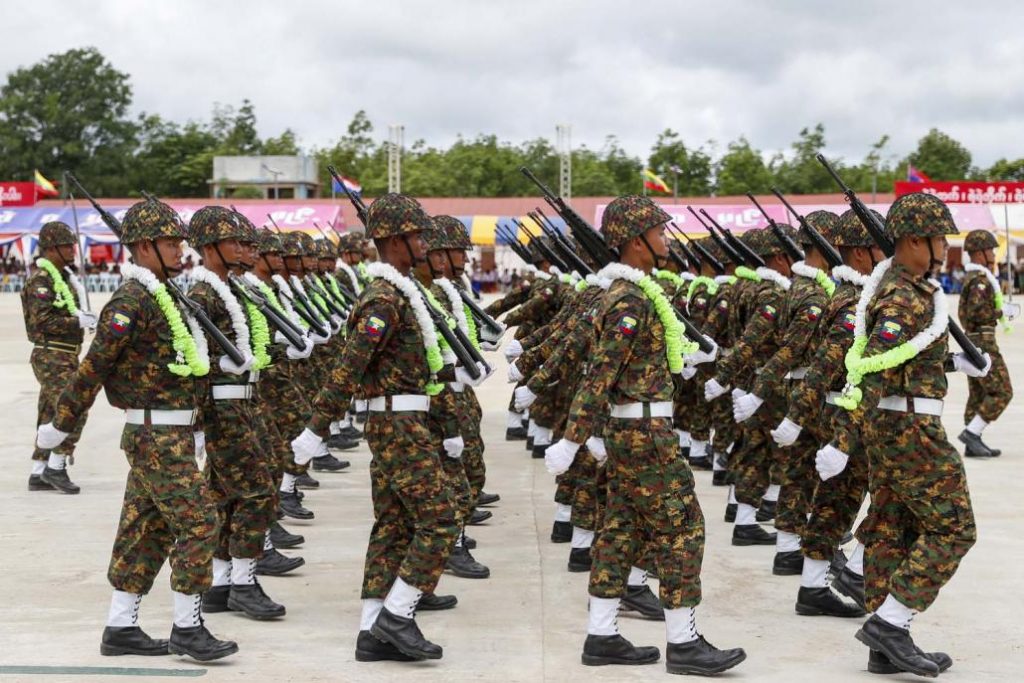
Divide and rule
The tensions between the Tatmadaw and BGF are largely a product of the Myanmar military’s approach to managing conflict since the country’s independence.
Myanmar’s civil war is often described as ethnic minority armies fighting for autonomy against the Tatmadaw. However, armed forces organised around ethnic identity can be readily found on both sides of the battlefield.
Because it has been unable to defeat its opponents outright, the Tatmadaw has sought to weaken them by encouraging splinter groups and breakaway factions, and arming minorities who feel vulnerable in the face of larger ethnic armed groups. In other cases, it has agreed ceasefires with ethnic armed groups in order to neutralise them as a threat, enabling the Tatmadaw to focus its firepower in other areas and avoid opening up too many fronts at once.
In exchange for their allegiance, the Tatmadaw has often granted these groups a large degree of autonomy. Although these pacts have often brought stability, they have also cemented a political economy in many areas of the country that is dominated by men with guns.
In at least one case it has created an armed group so powerful that it has been able to create a state within a state. The United Wa State Army, which agreed a ceasefire in 1989, now controls a sizeable territory along the Chinese border, and its 20,000-plus men under arms virtually guarantees full autonomy.
The Kayin State BGF was born out of a plan to avoid a repeat of this by bringing armed groups under closer state supervision. From early 2009, the Tatmadaw sought to transform those that had signed ceasefires into either border guard forces or people’s militias. While some like the DKBA and the New Democratic Army-Kachin accepted, many others, including the UWSA, resisted. When U Thein Sein became president in 2011 the scheme was dropped in favour of the current peace process.
Read more: Behind the front lines, as conflict flares in Kayin State
The DKBA was a natural fit for the BGF programme. It had long cooperated with the Tatmadaw, including in campaigns against the KNU, and as lowland, Buddhist Karen its leaders tended to be quite comfortable cooperating with the majority-Bamar Tatmadaw.
But rather than limit the ambitions of the former DKBA forces, the transformation to a BGF at a time of political and economic liberalisation only helped to turbocharge their growth. The man at the helm of the BGF, Chit Thu, has grown into arguably the most influential political figure in the state.
“The BGF is really powerful and Chit Thu is really at the heart of that,” said Mr Kim Joliffe, a researcher who has written extensively on peace and conflict in Kayin State. “Chit Thu really had a vision and went from strength to strength. He’s very different from other militia leaders around the country and in Karen State – he wasn’t going to sit there with a small concession and be happy with it. He developed big connections in Thailand and became a real player in the region.”
It was this profile and ambition that put Chit Thu on the radar of investors like Yatai that were looking for a safe haven for online gambling operations fleeing Cambodia and the Philippines, and may ultimately bring him undone.
Horsey said the Tatmadaw was determined not to allow any other armed groups to follow in the footsteps of the UWSA and become too powerful to control.
“The Tatmadaw knows that any armed group given a free hand to conduct business will gravitate to the illicit economy … but if they become too notorious, or too wealthy and powerful, they start to represent a threat,” he said.
“COVID-19 [border] closures put the BGF on the back foot, and the Tatmadaw has seized the moment. The only questions now are first, whether the Tatmadaw attempts to deliver a fatal blow or allows a diminished BGF to persist, and second, what the BGF is prepared to do about it.”
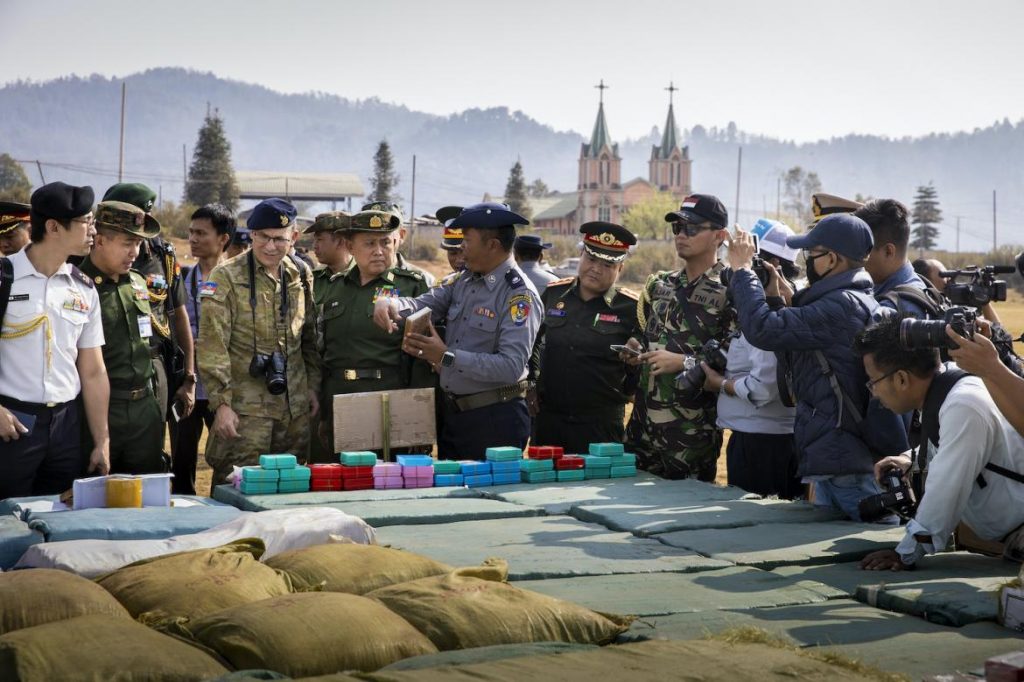
‘They are eating us up’
A cautionary tale for the BGF can be found almost 1,000 kilometres north of Myawaddy, in northern Shan State’s Kutkai Township.
Four years before the DKBA split from the KNU, the Kachin Independence Army’s 4th Brigade broke away and reached a ceasefire with the Tatmadaw. Known initially as the Kachin Defense Army, it later transformed into a militia under the military in 2009, shortly before the DKBA became a BGF. Fuelled by proceeds from illicit businesses, the Kawng Hkar People’s Militia grew into one of the most powerful Tatmadaw-backed forces in the country, and was sometimes deployed against ethnic armed groups like the Ta’ang National Liberation Army.
These illicit businesses included drug production and trafficking. By 2019, the Kawng Hkar militia was widely known to be providing a safe haven to international criminal networks producing huge quantities of lucrative crystal methamphetamine ending up on the streets of Australia, Japan and South Korea.
In March 2020, the Tatmadaw moved against the Kawng Hkar militia, arresting its leadership at a meeting in nearby Lashio and forcing the group’s 3,000 soldiers to hand over their weapons. Joint Tatmadaw and police raids in the Kawng Hkar’s territory netted drugs, precursors and equipment with an estimated valued in Myanmar more than US$300 million, although this figure would be substantially higher if the drugs made it to overseas markets.
The Kawng Hkar militia was not entirely disbanded. But without weapons, its power and influence has been greatly diminished. Two of the group’s leaders and about 30 other members remain in prison.
Read more: Sea of meth as Myanmar army smashes three drug labs
A senior militia member told Frontier in mid-January that he did not see a future for the militia if it cannot hold arms. The group now has little income and is struggling to pay its staff or provide basic services.
“Without having guns, how can we do business? We’d have to pay taxes,” he said. “We feel they [the Tatmadaw] is eating us up, bit by bit.”
The member said it was a mistake for the KDA to become a Tatmadaw-backed militia in 2009. “It meant they could disarm us at any time.” The official claimed the drug traffickers had moved into the region and set up production facilities because the Tatmadaw had failed to provide adequate security in the area. When it became an international scandal, the Tatmadaw then blamed the militia.
Since deposing the group’s leadership, the Tatmadaw has based itself at the militia’s headquarters in Loi Hkam and deployed its own forces to provide security.
But some locals say the presence of government forces has only increased their sense of vulnerability. The Kawng Hkar area is mostly home to Kachin people, but sits between large Ta’ang, Shan, Mong Wong and Kokang populations, each with their own armed group. For decades, this Kachin population has therefore relied on Kachin armed groups – first the the KIA 4th Brigade, then the KDA and finally the Kawng Hkar militia – to provide security. In December, about 6,000 residents of the Kawng Hkar area signed a petition requesting the government and army allow the militia to once again provide armed security for residents in the area, multiple sources confirmed.
“They [the Tatmadaw] said they take care of our security, but we feel it’s different. When we see them in our area, we feel we have no security,” said an administrative official in the militia “For example, we normally visit the streams in the summer, but now the Tatmadaw soldiers are based there we dare not visit.”
Meanwhile, the TNLA and Myanmar National Democratic Alliance Army had taken advantage of the situation by expanding their influence in areas previously under the control of the Kawng Hkar militia. Without the militia to provide security, locals feel caught between the Tatmadaw and the ethnic armed groups. Some villages have been abandoned because of inadequate security, and landmines are a growing problem.
“The ethnic armed groups came to our areas and demanded taxes from residents. They even came to recruit our people to join their forces,” the senior militia official said. “We are now in the middle of a power struggle for the region. People are being hurt because they are between these rival armed groups.”
He said he believed the militia should break away from the Tatmadaw and form a new group. “We’ve told our members that we will one day work together again and have asked them to remain united for now … if we need to form a new group, we could find more guns.”
The official said he had been reading about the stand-off between the Kayin State BGF and the Tatmadaw, and believed the Tatmadaw’s current approach would only lead to more conflict. “It’s not fair for the Tatmadaw to let some armed groups to run businesses freely and then restrict other groups,” he said. “The only answer is political reform. Ethnic groups are for a federal system and self-determination. If they [the Tatmadaw] can’t do this and then they try to restrict us, it will only lead to more problems.”
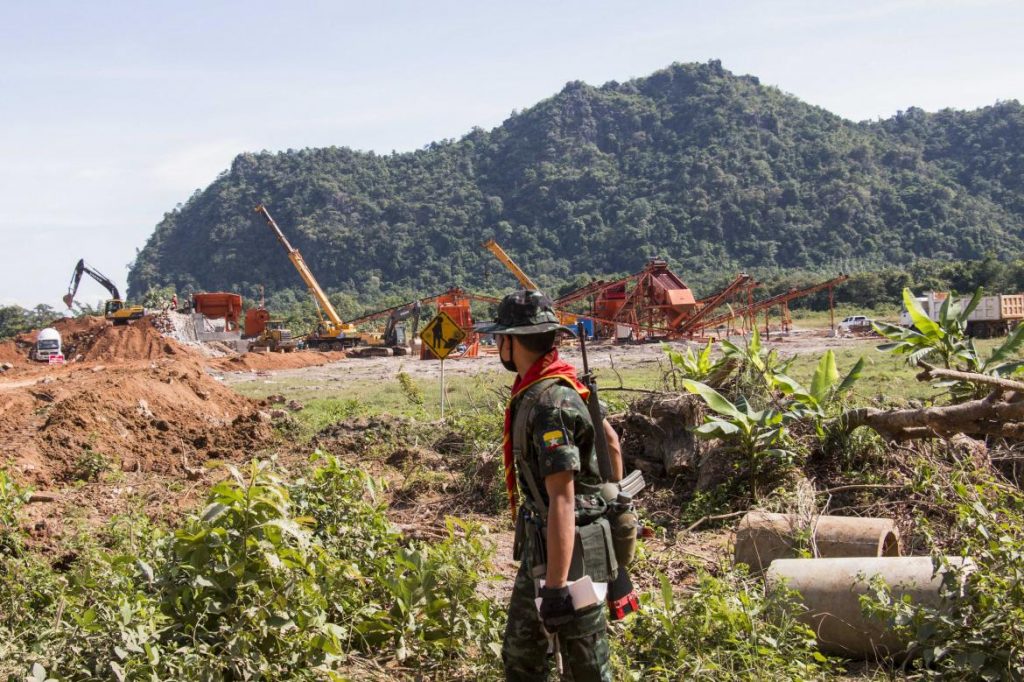
Back to the status quo
Giving up their businesses seems out of the question for the leaders of the BGF. They argue that they have operational costs which are not borne by the Tatmadaw, including support for their reserve forces, which Chit Thu claims is 5,000 soldiers on top of the 3,000 officially within its 13 battalions. The BGF also often uses weapons purchased on the black market, including automatic rifles and armoured Humvees, rather than Tatmadaw-issue equipment. And while the BGF is not overly political, it espouses a kind of flag-waving Karen nationalism that requires sponsorship of religious and cultural events, and development activities in communities – all of which costs money. “We all know that our leaders work not for their own profit, just for the development of our Karen region,” said Major Naing Maung Zaw, a BGF spokesperson.
But then, of course, there’s Kokko Villa, Chit Thu’s mansion at Shwe Kokko, and the palatial homes of other BGF commanders that are spread around Myawaddy, along with their fleets of cars and other goodies that large amounts of cash can bring. “They say it’s development for Karen people,” said Joliffe, “but in practice it’s mostly just profit-making for the leaders. It’s very extractive development … the projects they focus on are not good for the economy and not good for the people.”
Invest in Frontier Myanmar’s independent journalism by becoming a member. Sign up here.
What, then, does the future hold? Although the disarmament of the BGF, or the mass exodus of its forces from the Tatmadaw, are possible outcomes, a range of factors point to a less dramatic resolution.
The BGF remains militarily and strategically important to the Tatmadaw, and its departure could upset the political balance in Kayin State and potentially lead to renewed conflict. For the BGF, the priority is likely to be ensuring a stable environment that enables them to pursue their economic objectives. As other armed groups in Kayin State have signed ceasefires, they have little incentive to encourage BGF members to break away, either.
“The Tatmadaw’s policy is to maintain good relations with the BGF but we’ve reached this point because the situation wasn’t handled properly,” said Min Zaw Oo. “If it escalates, then it could impact on the fragile peace process. But it’s unlikely that all stakeholders will be willing to let that happen.”
Such an outcome may preserve the peace, but it is likely to come at the cost of confirming the outsized place of armed groups in Myanmar’s economy.


